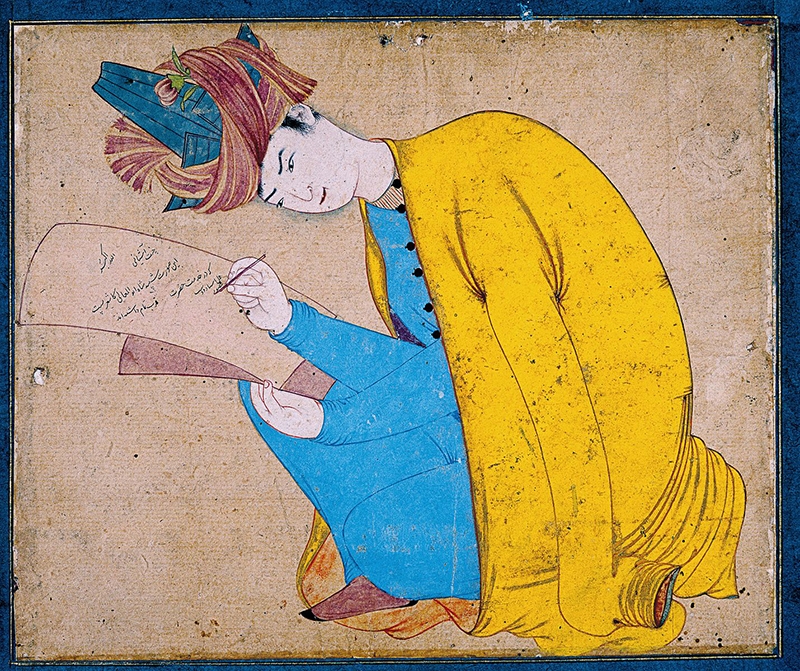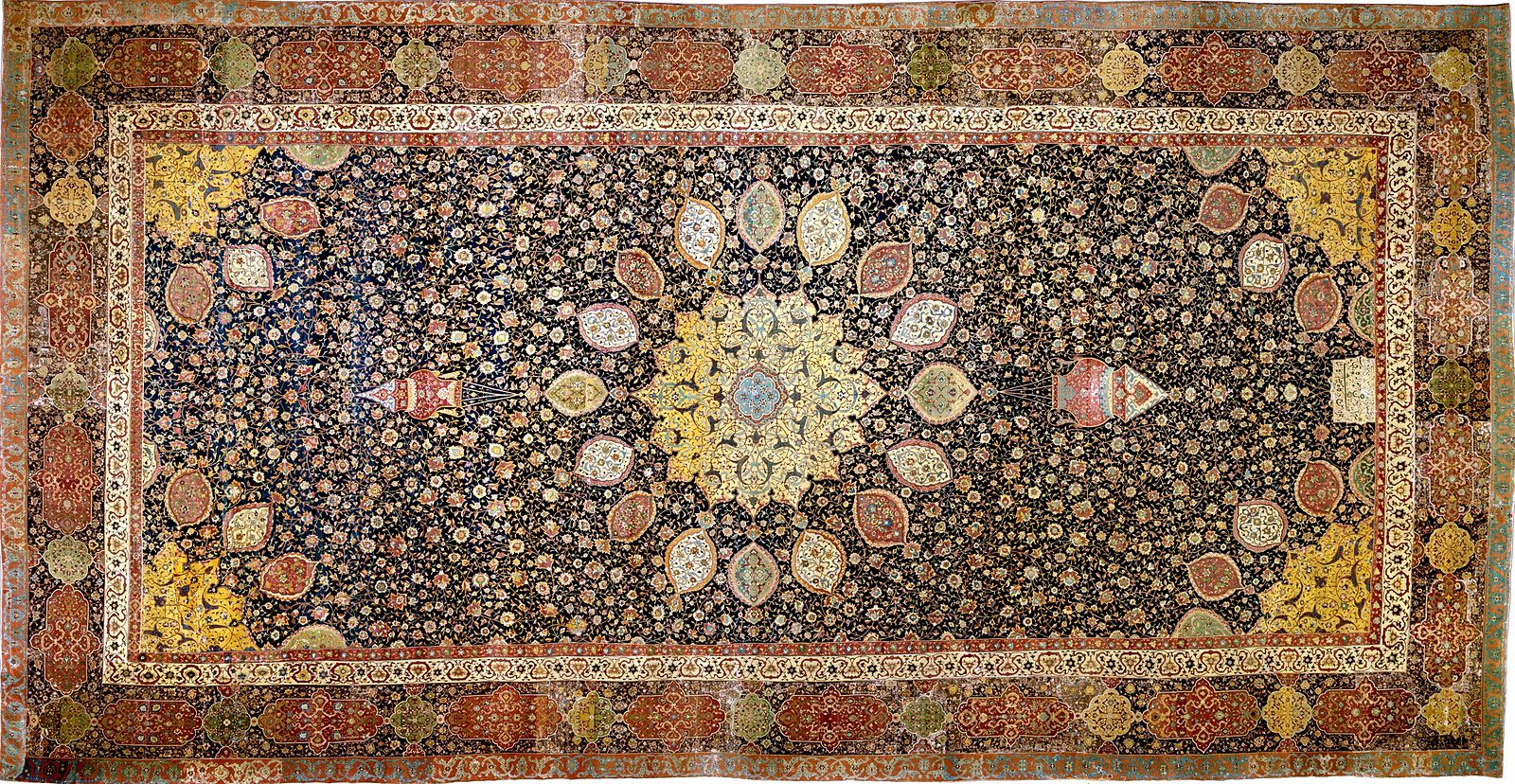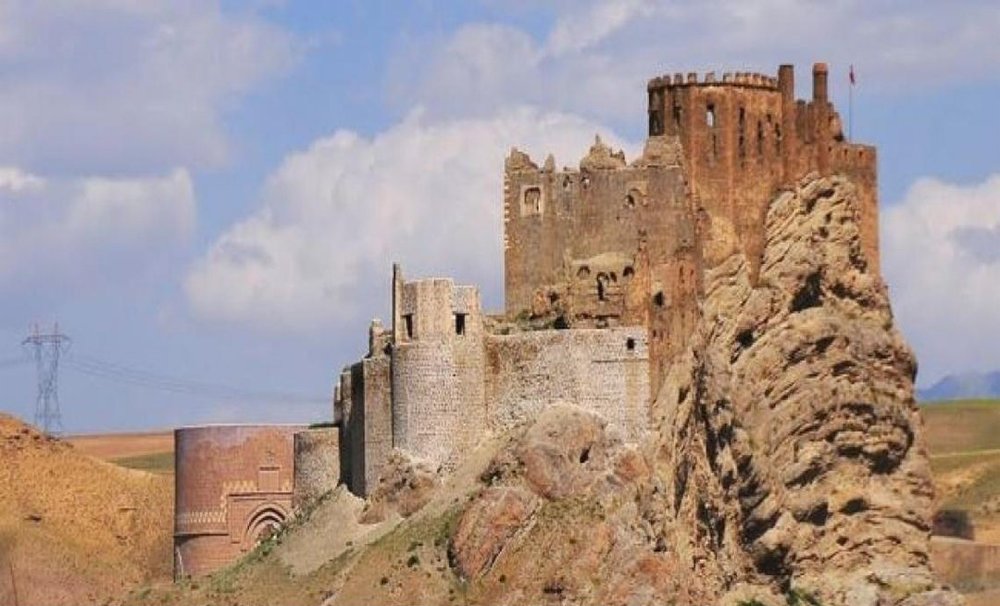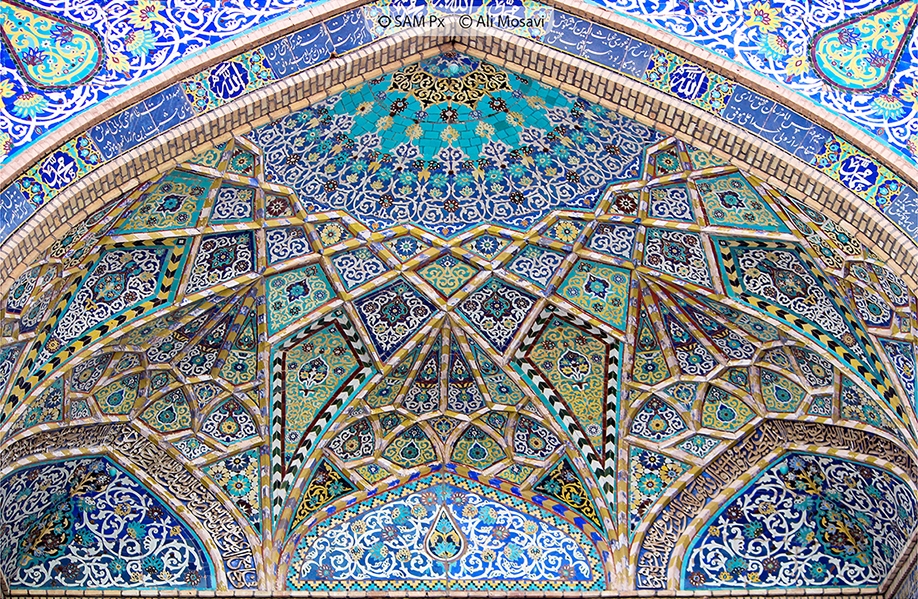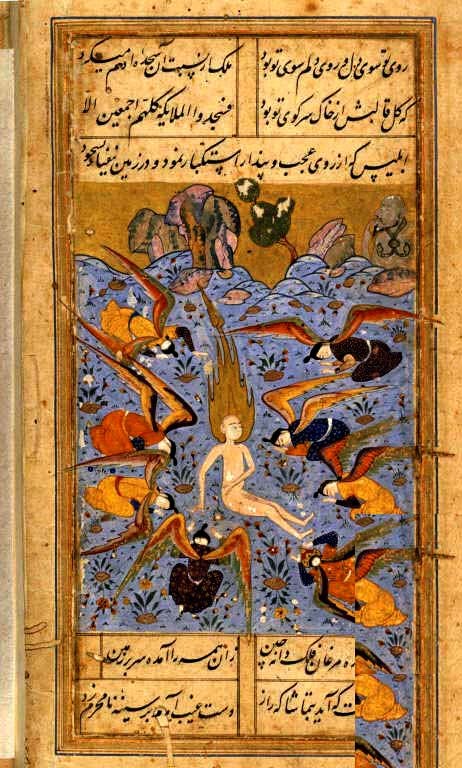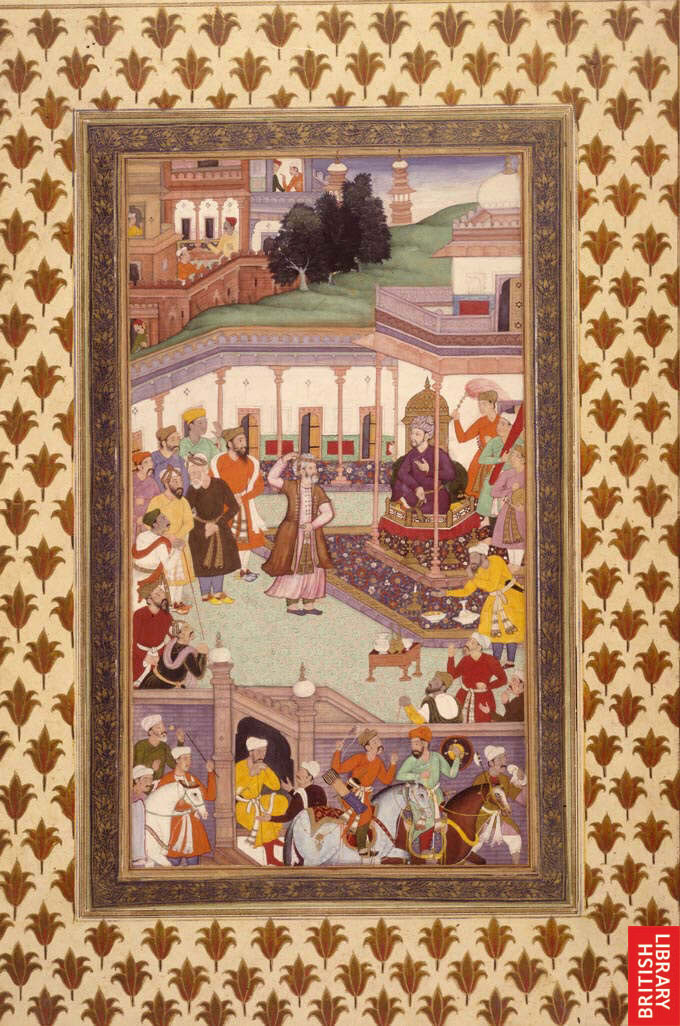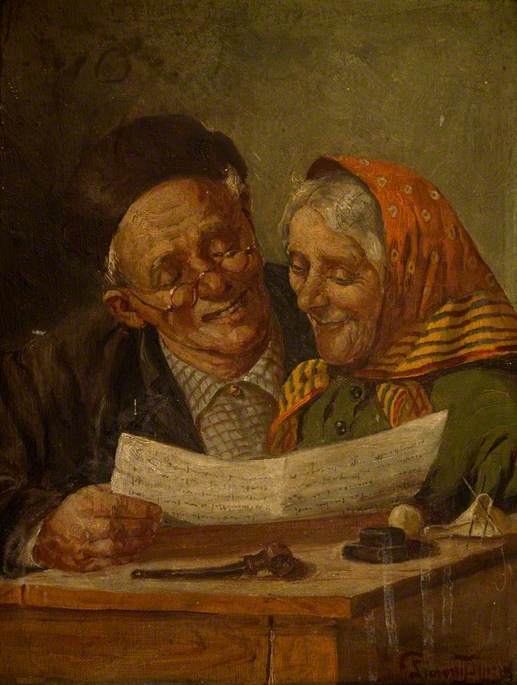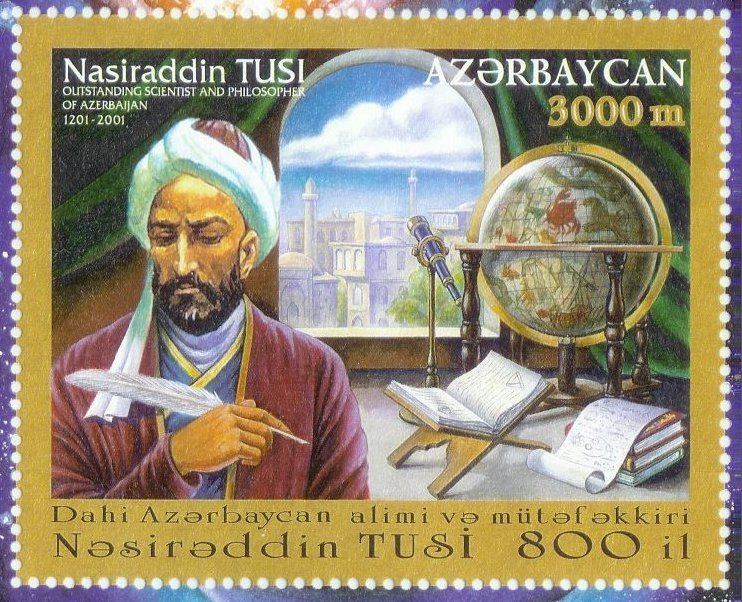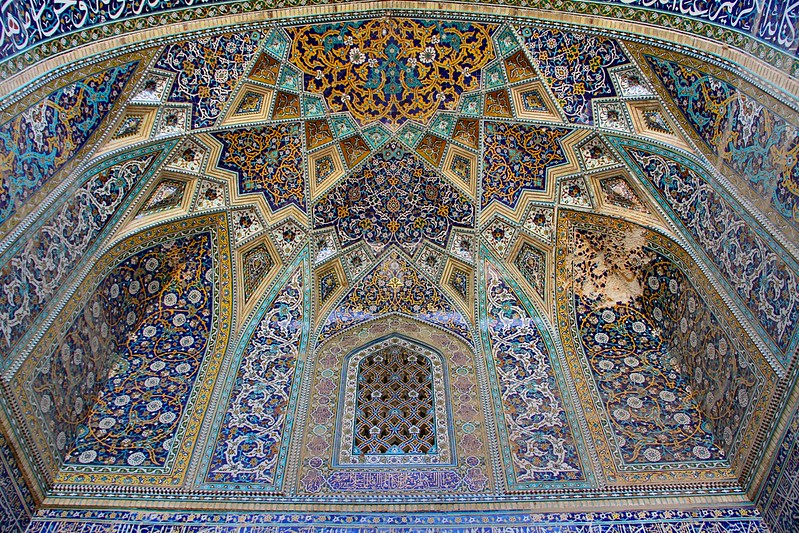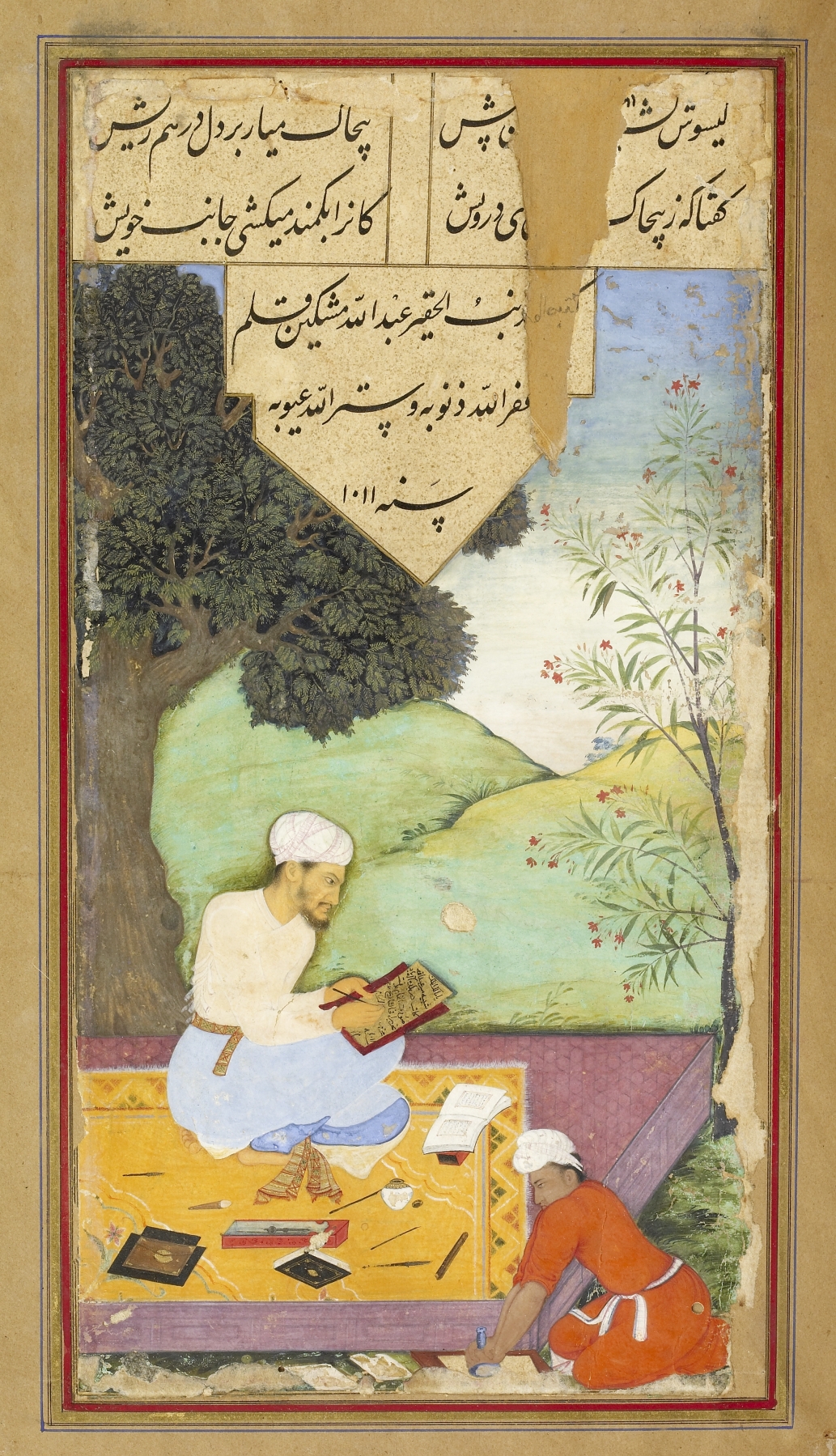Credits
إن الله جميل يحب الجمال.
“Verily, God is beautiful; He loves beauty.”
~ Prophet Muhammad
Credits
Special thanks to Mi Huang and Cathy Li for their immense contributions to the content and design of this website.
Every effort has been made to ensure images used are appropriately licensed and that their creators are fully credited. If you are the creator or owner of an image on this site and it has not been licensed or credited appropriately, please contact the site owner at the University of Toronto and the appropriate modifications will be made.
Image Attributions
Title: Portrait of Shah Abu’l Ma‘ali
Author: Dust Muhammad
Description: Dust Muhammad. Portrait of Shah Abu’l Ma‘ali. ca. 1556 Aga Khan Collection
License: Public domain
Modification: Background removed
Date obtained: August 6, 2020
Title: Ardabil Carpet rotate
Author: Soerfm
Description: Derived from File: Ardabil Carpet.jpg
License: Creative Commons Attribution-Share Alike 3.0 Unported
Modification: N/A
Date obtained: August 6, 2020
Source URL: https://commons.wikimedia.org/wiki/File:Ardabil_Carpet_rotate.jpg
Title: Alamut castle
Author:
Description:
License:
Modification: N/A
Date obtained: July 23, 2020
Source URL: https://www.tehrantimes.com/news/429203/Centuries-old-water-supply-system-found-in-Alamut-castle
Title: Herat Centeral blue Mosque Architecture
Author: Alimosavisam
Description: The architectural structure of the tiles of the Grand Mosque
License: Creative Commons Attribution-Share Alike 4.0 International
Modification: N/A
Date obtained: July 23, 2020
Source URL: https://commons.wikimedia.org/wiki/File:Herat_Centeral_blue_Mosque_Architecture.jpg
Title: Adam honoured by angels – persian miniature (c. 1560)
Author: UNKNOWN; illustrator of ‘Majalis al-‘Ushshaq’, Iran (Shiraz)
Description: Adam honoured by angels – persian miniature (c. 1560)
License: Public domain; PD-OLD; PD-ART
Modification: Top and bottom part of the image cropped
Date obtained: July 23, 2020
Source URL: https://commons.wikimedia.org/wiki/File:Adam_honoured_by_angels_-_persian_miniature_(c._1560).jpg
Title: Babur greets courtiers at the Id festival
Author: Painters of Babur
Description: Illustrations of Mughals from the Baburnama. The “Memoirs of Babur” or Baburnama are the work of the great-great-great-grandson of Timur (Tamerlane), Zahiruddin Muhammad Babur (1483-1530). The Baburnama tells the tale of the prince’s struggle first to assert and defend his claim to the throne of Samarkand and the region of the Fergana Valley. After being driven out of Samarkand in 1501 by the Uzbek Shaibanids, he ultimately sought greener pastures, first in Kabul and then in northern India, where his descendants were the Moghul (Mughal) dynasty ruling in Delhi until 1858.
License: Public domain
Modification: Top and bottom part of the image cropped
Date obtained: July 23, 2020
Source URL: https://commons.wikimedia.org/wiki/File:Babur_greets_courtiers_at_the_Id_festival.jpg
Title: Elderly couple reading
Author: Eugenio Zampighi
Description: An oil painting of elderly couple reading on canvas
License: Public domain
Modification: N/A
Date obtained: August 6, 2020
Source URL: https://commons.wikimedia.org/wiki/File:Eugenio_Zampighi_-_Elderly_couple_reading.jpg
Title: Ali ibn Abi Talib, Muhammad’s Foster Brother, Cousin, and Son-in-law, Receiving the Bay’ah (oath of allegiance) in Kufa (modern-day Iraq), 656 CE.
Author:
Description: A converse to the previous image, this Ottoman miniature shows ‘Ali receiving the bay’ah in order to ratify his claim to the title of caliph-imām. It is a reflection of Sunnī historical memory because it reinforces the Sunnī notion that leadership of the ummah was determined through a process of communal consensus rather than through Prophetic designation, as Shī‘ī Muslims would later contend. Depicted in this way, ‘Ali’s accession is consistent with the political precedent set down by Abū Bakr in the wake of the Prophet’s death and shows ‘Ali’s leadership as a continuation of the first iteration of the Sunnī-Jamā‘ī Imamate. In this image, ‘Ali’s status as a venerable companion and pious forebear is maintained without ascribing to him special qualities in terms of uniquely divine knowledge and legitimacy.
License:
Modification: Left and bottom part of the image cropped
Date obtained: July 23, 2020
Title: Nasir al Din al Tusi
Author:
Description: a stamp of Nasir al Din al Tusi
License:
Modification: Bborders of the image cropped
Date obtained: July 23, 2020
Source URL: https://alchetron.com/Nasir-al-Din-al-Tusi
Title: Vault and colored ceiling of the Iwan of an Imamzadeh at the tomb of Omar Khayyam
Author: dynamosquito on Flickr from Niort, France.
Description:
License:
Modification: Cropped
Date obtained: August 6, 2020
Source URL: https://www.flickr.com/photos/dynamosquito/6185006218/
Title: Portrait of the Scribe Mir ‘Abd Allah Katib in the Company of a Youth Burnishing Paper
Author: Amir Khosrow
Description: This illustration from Walters manuscript W.650 is attributed to Nanha by Stuart C. Welch. The scribe holds a piece of paper giving his name, the place of copying (Allahabad), and the date 27 Muharram 1011 AH/AD 1602.
License: This work is free and may be used by anyone for any purpose.
Modification: Background removed.
Date obtained: August 9, 2020
Title: Moghul.1590-95гг
Author: Anonymous
Description: Artists and calligraphers at work. Mughal miniatures.
License: This image is in the public domain.
Modification: cropped and removed background
Date obtained: August 9, 2020
Source URL: https://commons.wikimedia.org/wiki/File:Moghul.1590-95%D0%B3%D0%B3.jpg
Title: Yahyâ ibn Mahmûd al-Wâsitî 005
Author: Yahya ibn Mahmud al-Wasiti
Description: A 13th-century book illustration produced in Baghdad by al-Wasiti, showing a group of pilgrims on a hajj
License:
Modification: cropped and removed background
Date obtained: August 9, 2020
Source URL: https://commons.wikimedia.org/wiki/File:Yahy%C3%A2_ibn_Mahm%C3%BBd_al-W%C3%A2sit%C3%AE_005.jpg
Title: Roof hafez tomb
Author: Pentocelo
Description: العربية: سقف المقصورة التي تغطي قبر حافظ الشيرازي في شيراز وهي مصقولة بالفسيفساء، ويتبع هذا التصميم نظام الجرة (بالفارسية: گره) هي مجموعة من خمسة طرق للتبليط التي أُستخدمت كأنماط في زخرفة المباني في العمارة الإسلامية
License:
Modification: tinted
Date obtained: August 9, 2020
Source URL: https://commons.wikimedia.org/wiki/File:Roof_hafez_tomb.jpg

